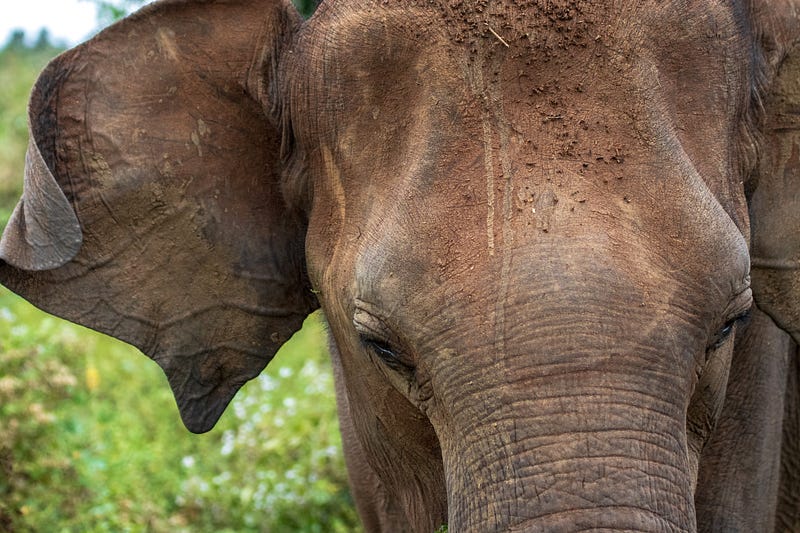# Did Global Warming Spark the Emergence of Giant Dinosaurs?
Written on
Chapter 1: Introduction to Sauropods
Sauropods are perhaps the most recognizable dinosaurs, characterized by their lengthy necks, sturdy legs, and massive size. This group includes the largest terrestrial vertebrates known to have roamed the Earth, with some species, like Argentinosaurus, reaching lengths of up to 35 meters (115 feet) and weighing over 60 tons. The question of how these creatures attained such immense sizes has long intrigued scientists.
Recent discoveries of new sauropod fossils in Argentina, combined with geological insights from the early Jurassic Period, shed light on the evolutionary processes that led to the growth of these colossal dinosaurs.
Section 1.1: Evolutionary Background of Sauropodomorpha
Sauropodomorpha, the lineage that encompasses both sauropods and their ancestors, originated in the Late Triassic Period, approximately 230 million years ago. For the initial 50 million years, these creatures included a variety of both bipedal and quadrupedal herbivores, with sizes ranging from goat-sized to over 10 meters (33 feet) in length.
Around 180 million years ago, a significant extinction event resulted in the disappearance of most sauropodomorph groups, leaving sauropods as the sole survivors. The reasons for this dramatic shift during the Early Jurassic Period remained elusive—until now.
Section 1.2: The Role of Global Warming
Geological data indicates that around 180 million years ago, intense volcanic activity in the Southern Hemisphere released substantial amounts of CO2 into the atmosphere, leading to a global warming event. This rise in greenhouse gases significantly altered both marine and terrestrial ecosystems.
On land, the climatic shift caused a major transition in plant life. Prior to this volcanic activity, the dominant flora included sphenophytes, dipterid ferns, conifers, seed ferns, and cycads—plants that thrived in moist environments.
After the environmental upheaval, conifer trees became increasingly common, suggesting a shift to a drier, more seasonal climate. This change may have favored the survival of species that could consume these new, tougher plants.

Section 1.3: Adaptations of Early Sauropodomorphs
Early sauropodomorphs had slender skulls and less efficient jaws, with small teeth and thin enamel, which limited their ability to process high-fiber plant material. However, the sauropods that followed exhibited adaptations that allowed them to thrive on the proliferating conifer trees.
A newly discovered sauropod species from Argentina, Bagualia alba, offers important insights into this evolutionary transition. Found in the Cañadón Asfalto Formation, this species lived 179 million years ago and weighed nearly 10 tons. Notably, its teeth had enamel that was approximately seven times thicker than that of other herbivores that went extinct, enabling it to effectively consume the tough leaves of conifers.

Chapter 2: The Evolution of Size
While having robust jaws and thick teeth was essential for consuming tough vegetation, it was also crucial for sauropods to develop larger digestive systems. Feeding on conifers would have driven an evolutionary demand for larger stomachs, and consequently, an increase in overall body size.
But what about their long necks?
These elongated necks provided a significant evolutionary advantage by allowing these massive creatures to reach high into trees for food without the need to move their large bodies excessively. This adaptation was vital for their survival.
Some researchers, including D. Pol, suggest that the long necks may have also functioned to help dissipate heat, similar to the large ears of modern elephants.

Epilogue: The Legacy of Sauropods
The global warming event that occurred roughly 200 million years ago initiated a significant transformation in the planet's flora, allowing sauropods to thrive without competition. Over millions of years, these dinosaurs evolved into incredibly diverse and massive forms.
By 150 million years ago, sauropods had become the dominant herbivores in their ecosystems, with well-known species such as Brontosaurus, Brachiosaurus, and Diplodocus flourishing in the North American Morrison Formation while their relatives thrived in Africa and Europe.
Despite a general decline in dinosaur diversity during the subsequent Cretaceous Period, a group of macronarian sauropods called titanosaurs managed to spread across all continents. These giants faced extinction around 66 million years ago, along with other non-avian dinosaurs, marking the end of a remarkable chapter in evolutionary history.
References
Pol D., Ramezani J., Gomez K., Carballido J. L., Carabajal A. Paulina, Rauhut O. W. M., Escapa I. H. and Cúneo N. R., (2020). Extinction of herbivorous dinosaurs linked to Early Jurassic global warming event. Proc. R. Soc. B. 287:20202310. http://doi.org/10.1098/rspb.2020.2310
Cúneo, R., Ramezani, J., Scasso, R., Pol, D., Escapa, I., Zavattieri, A. M., & Bowring, S. A. (2013). High-precision U–Pb geochronology and a new chronostratigraphy for the Cañadón Asfalto Basin, Chubut, central Patagonia: Implications for terrestrial faunal and floral evolution in Jurassic. Gondwana Research, 24(3–4), 1267–1275. doi:10.1016/j.gr.2013.01.010
The video titled "Was it Asteroid Impact or Climate Change that Caused the KPg Mass Extinction?" explores the possible causes behind one of the most significant extinction events in Earth's history, providing insights into the role of climate change.
Another insightful video, "Do All Mass Extinction Events have a Common Cause? | GEO GIRL," discusses the shared characteristics of mass extinction events and examines whether they stem from similar causes.